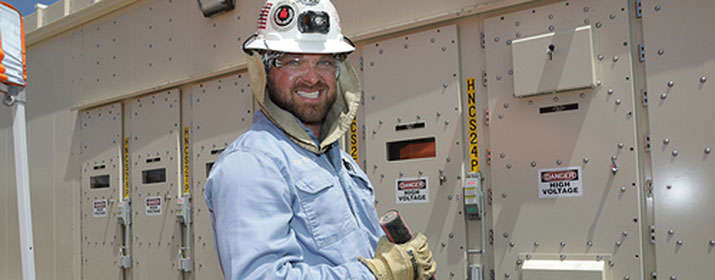
TEP improved reliability for customers in east Tucson this summer with the completion of a new substation designed to reduce unplanned outages and help meet the area’s future energy needs.
The 138-kilovolt (kV) Harrison Substation was completed in June at the northwest corner of North Harrison Road and East Speedway Boulevard. The $18 million project helps to improve reliability by reducing strain placed on three nearby substations, which were operating at or above capacity.
TEP operates 121 electric substations, which change the voltage of electric facilities for transmission and delivery of electric service to area customers.
“Substations play a crucial role in our local energy grid, connecting TEP’s generating resources to customers’ homes and businesses,” said Cynthia Garcia, Chief Information Officer and Vice President of Engineering and Safety. “We invest significant time and resources to build, upgrade and maintain our substations, which we use to provide service to customers around the clock.”
Typically, it takes about five years to design, permit and build a standard distribution substation. New substation transformers, which can cost nearly $1.5 million each, can take up to two years to build and install. Since 2018, TEP has invested more than $580 million in its transmission and distribution system, including substations.
The need for the Harrison Substation was identified in long-term transmission plans filed with the Arizona Corporation Commission. Determining when and where to build new substations is based on several factors, including customer energy needs, proximity to existing infrastructure, cost, environmental factors and impacts on nearby residents. Harrison Substation provides greater electric capacity to support continued reliability for current and future residential and commercial customers in the area.
In November 2015, the City of Tucson granted a Special Exception Land Use Permit to TEP for construction of the substation. Changes in customers’ energy needs and regional growth demands required TEP to amend the original construction timeline. Public input was an important aspect of the design and permitting process, with TEP receiving questions and comments from dozens of neighborhood residents.
Brian Pugh, Supervisor of Land Resources, said that input helped TEP to refine its plans. Originally, TEP planned to install a 75-foot communications tower at the substation. Neighbors expressed concerns about the tower during the public meeting due to potential visual impacts to the Catalina Mountains.
The team worked to revise the design, Pugh said. “Eventually, we found another way to tie the substation into our communications network, so there was no need to install the communications tower.”
That was well-received by neighbors, Pugh said, as were decisions to move substation transformers further away from nearby homes and add more mature vegetation to the site. TEP also amended work schedules and used water trucks to reduce dust and noise during construction.
Other recently completed substations include the Aeropark Substation near the Tucson International Airport and the Kino Substation near South Kino Parkway and East 36th Street. The Sonoran 138-kV Substation, completed in 2020, and accompanying Cisne Switchyard help interconnect the new Wilmot Energy Center. It includes a 100 megawatt (MW) solar array and 30 MW battery energy storage system. New substations and switchyards were also recently brought online to interconnect with the 99 MW Borderlands Wind Farm in New Mexico and the new 15 MW Raptor Ridge Solar system in Tucson.
Improvements to existing substations include replacement of critical substation transformers, breakers and switches. TEP has replaced more than 50 breakers and a dozen transformers across 16 substations over the last few years. These replacements were necessary to address aging equipment near the end of its useful life and to maintain and improve service reliability for customers.






